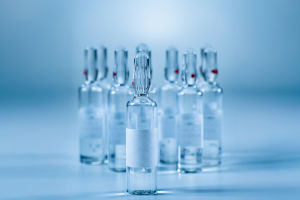Ever shrug off a slow urinary stream as “just aging”? Yet prostate cancer strikes one in eight men, often without warning.
Early detection transforms a stealthy menace into a highly treatable condition.
Step 1: Assess Risk
Prostate cancer risk soars after age 65—60% of cases emerge then—and doubles if a father or brother was diagnosed. Inherited BRCA2 mutations increase risk fivefold, while Black men face a 70% higher incidence and up to a fourfold greater mortality. Discuss family history and genetic background with your physician to personalize screening.
Step 2: Initiate Screening
Experts recommend a shared decision-making conversation before screening:
1. Average-risk men: begin discussions at age 50.
2. High-risk men: start at 40–45 if Black ancestry, strong family history or known mutation.
3. Stop screening past age 70 or when life expectancy falls below 10 years.
The USPSTF assigns a “C” grade (benefits outweigh harms for some) for ages 55–69; the American Urological Association advises PSA testing at 40 for high-risk individuals.
Step 3: Undergo PSA Test
A Prostate-Specific Antigen blood test (~$30–$50) measures protein levels—higher PSA correlates with greater likelihood of prostate abnormalities. A single PSA reading is not diagnostic; rising PSA over time warrants further evaluation.
Step 4: Digital Exam
Alongside PSA, a digital RTL exam (DRE) allows a urologist to feel prostate texture and detect hard nodules or asymmetry. While less sensitive, DRE adds value when PSA is borderline or rising.
Step 5: Advanced Imaging
Elevated PSA or suspicious DRE leads to multiparametric MRI (approx. $500–$1,000). This reveals lesions invisible on ultrasound and guides targeted biopsies. MRI findings use a standardized PI-RADS score (1–5) to grade cancer suspicion.
Step 6: Targeted Biopsy
Under ultrasound or MRI fusion guidance, a transRTL biopsy samples 12–18 cores from suspicious areas and peripheral zones. Pathologists assign a Gleason score by adding the two most prevalent cell-pattern grades (3+3=6 to 5+5=10), predicting aggressiveness and guiding management.
Step 7: Interpret Results
- Gleason 6 (3+3): low-risk, eligible for active surveillance.
- Gleason 7 (3+4 or 4+3): intermediate risk, consider treatment based on age and comorbidities.
- Gleason ≥8: high-risk, recommend definitive therapy like surgery or radiation.
Step 8: Choose Treatment
Curative options vary:
- Radical prostatectomy: robotic removal (cost $10,000–$15,000) with nerve-sparing to preserve potency.
- Radiation therapy: external beam or brachytherapy over 5–8 weeks ($15,000–$25,000).
- Focal ablation: HIFU or cryotherapy targets tumors, reducing side effects.
Discuss incontinence and erectile dysfunction risks—and rehabilitation strategies or medications like sildenafil.
Step 9: Embrace Active Surveillance
Low-risk patients undergo PSA checks every 3–6 months, repeat MRI annually and a confirmatory biopsy within one year. Surveillance spares side effects while monitoring for progression; about 30% transition to treatment within five years.
Step 10: Adopt Healthy Lifestyle
Heart-healthy diets—rich in leafy greens, lean proteins and whole grains—may lower aggressive cancer risk. Aim for 150 minutes of moderate exercise weekly to preserve density during androgen-deprivation therapy and maintain cardiovascular health.
Step 11: Post-Treatment Monitoring
After curative therapy, PSA measurements every 6–12 months detect recurrence early. Rising PSA post-surgery (biochemical recurrence) triggers salvage radiation, while metastatic spread warrants androgen receptor inhibitors or chemotherapy, extending survival by years.
Conclusion
Prostate cancer need not be a silent killer. By assessing personal risk, engaging in informed screening, navigating precise diagnostics and choosing tailored surveillance or treatment, every man regains control. Which expert-backed step will you prioritize today to unmask prostate cancer before it advances?


